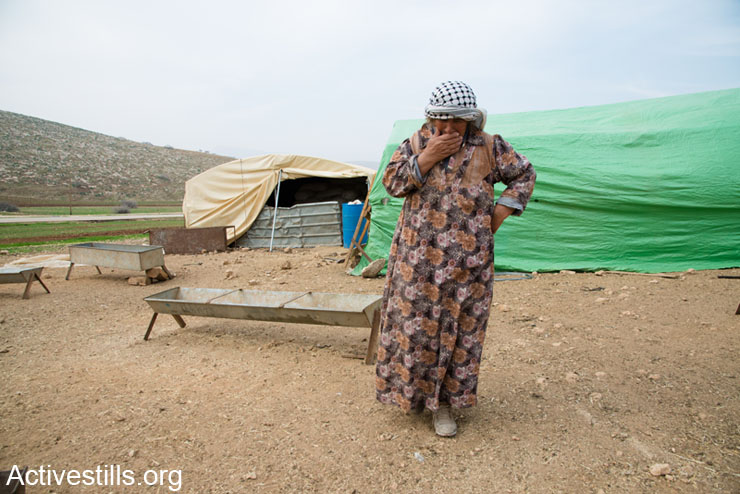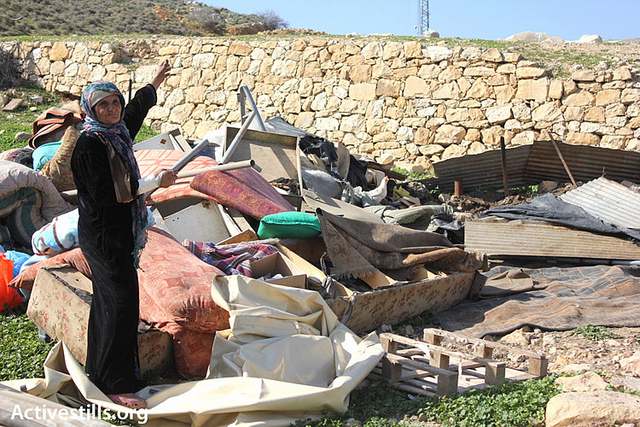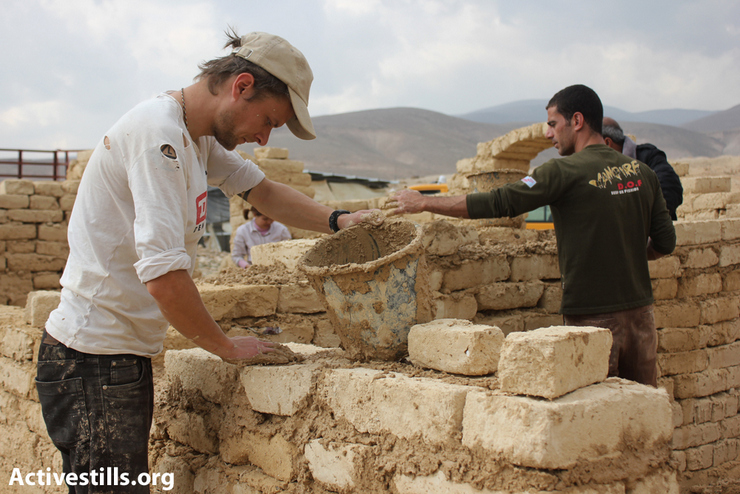Israel’s High Court orders the government to upgrade representation of Palestinians in planning committees. But will the minor changes only serve to legitimize a system based on inequality?

Israel’s High Court on Monday ordered the state to provide proposals for including Palestinian representatives in planning committees that govern development and land use in Area C (which makes up 60 percent of the territory in the West Bank). The interim decision was made following an appeal by the Palestinian village of Ad-Dirat-Al-Rfai’ya, together with human rights organizations Rabbis For Human Rights, the Israel Committee Against House Demolitions (ICAHD), The Jerusalem Legal Aid and Human Rights Center (JLAC), and St. Yves.
Atypically, the hearing lasted a full hour. Oren Yiftachel, a professor of political geography at Ben Gurion University and a former chairman of Israeli human rights NGO B’Tselem observed that Palestinian human rights claims related to the occupied territories are commonly dismissed on the basis of “security concerns.”
During the hearing, the state mainly argued that there was no discrimination against Palestinians, since they are already allowed to submit planning requests to the administrative committees.
But grossly asymmetrical data apparently left the court little room to justify the current situation: over 90 percent of Palestinian planning requests are rejected – over 97 percent in recent years, according to a B’Tselem report. Therefore, they build without permits, and their structures often face demolition orders. According to the report, an average of over 200 structures have been destroyed annually since 2000. The orders may be executed by Israeli authorities; B’tselem notes 784 cases where Palestinians destroyed their own structures following destruction owners. In existing villages, elemental services such as water and electricity are scarce – and incomparable to the situation in the neighboring settlements.
Further, the hearing took place just days after the military-governed Civil Planning Administration froze a recent initiative for incremental improvement in Palestinian planning in Area C. While the state had previously argued that any structural changes would upset the status quo and represent military interference into a political/diplomatic issue, the same authorities have now decided that the peace process showdown would be punished by freezing those recent plans. But that in itself will change the status quo, as settlement building and development has not been frozen.

As a result, “Justices Rubinstein, Handel, and Solberg also expressed dissatisfaction with the current planning situation and rejected the state’s argument that participation of Palestinians exists in the current system and therefore the status quo ought to remain,” wrote Rabbis for Human Rights in a statement. The judges also related to the claim that all changes must wait for a political resolution: (my translation)
We believe it is appropriate…for the [state] to seek a certain upgrade – as long as the political resolution wished for has not been found – of involvement [in planning] of Palestinians in Area C…We are of course aware of the sensitivities and complexities of the political situation, but between the current situation and accepting the petitioner’s position, there is a range within which it is possible to be creative.”
A cosmetic change?
The court’s language underscores the minimalist nature of its recommendation: a “certain” upgrade, while most certainly the petitioners demands – civilian planning and representation in determining their own lives – are at the furthest end of the “range.”
Still, the court ruling is ostensibly positive. It is a message to the military-run planning authorities that their arguments were transparent and flimsy. For Palestinians living under desperate conditions, it is a practical directive to change the situation.
But the petitioners remain concerned for the long-term prospects for Palestinian livelihood and their political situation in general.
Cosmetic representation may not bring actual change. According Rabbis for Human Rights:
Though we welcome this important assertion, past experience brings up serious concerns whether the court’s desire for a compromise will lead to an actual impact on planning decisions or a charade of participation. We feel compelled to warn that Palestinian participation within the existing planning system may only bring about the appearance of participation, with no actual impact.

Photo by Ahmad Al-Bazz/ Activestills.org)
Furthermore, Palestinian participation in existing committees leaves civil planning in the hands of military authority. While planning for settlements is managed by the same authority, in the end, those communities live under Israeli civil law and systems. The reality of two people living side by side under different laws would continue. Palestinian participation could even be viewed as legitimizing the resulting “separate and unequal” situation, as described by the petitioners’ lawyer in the hearing.
This is a general dilemma that human rights organizations are concerned with, said Professor Yiftachel. In the struggle for relief for intolerable problems in daily life, do minor victories essentially perpetuate the larger system?
The court has given the state 90 days to submit proposals for incorporating Palestinian representatives into planning authorities, and the petitioners will then have 30 days to respond.
Related:
Court case challenges the building blocks of occupation
House demolitions exploit the powerless in Area C
Resource: Area C Palestinians under threat of displacement

